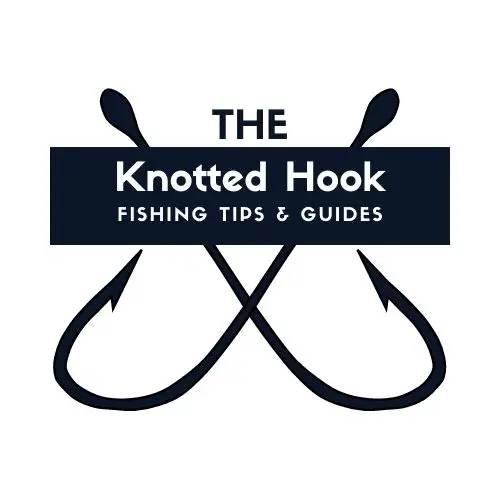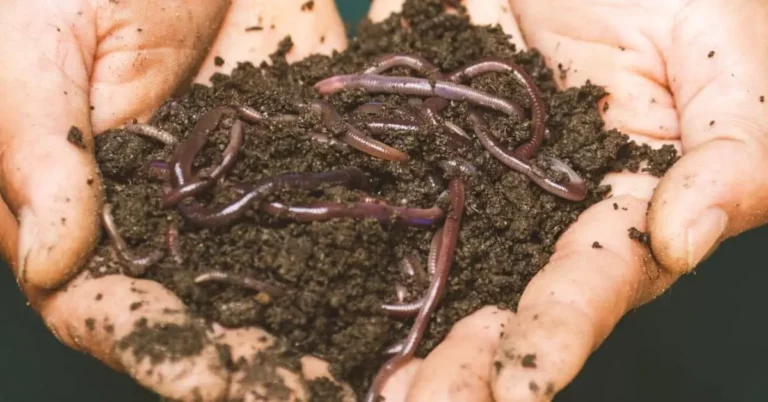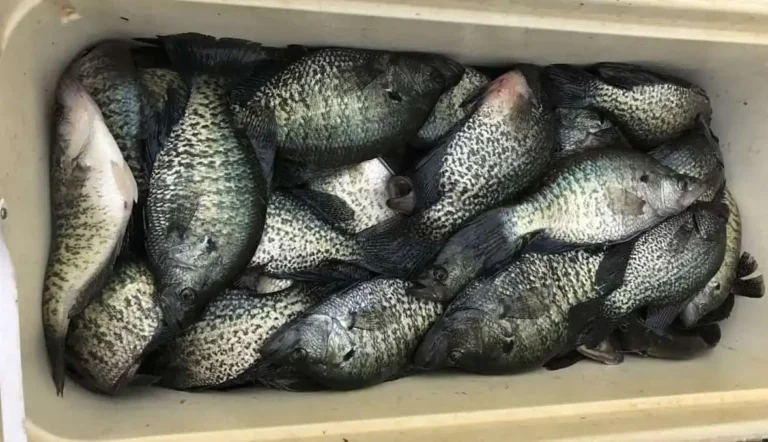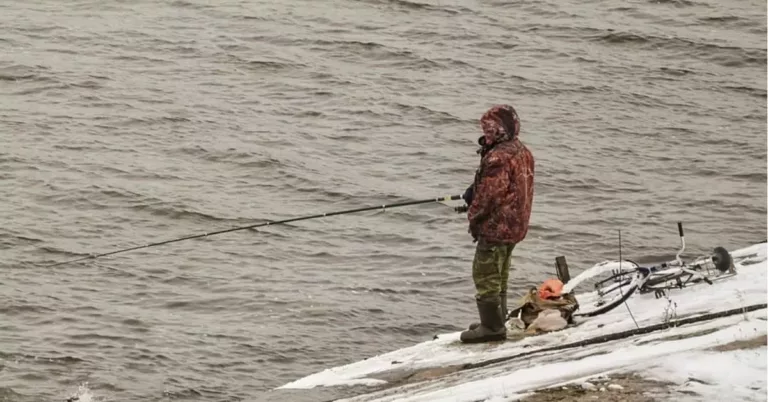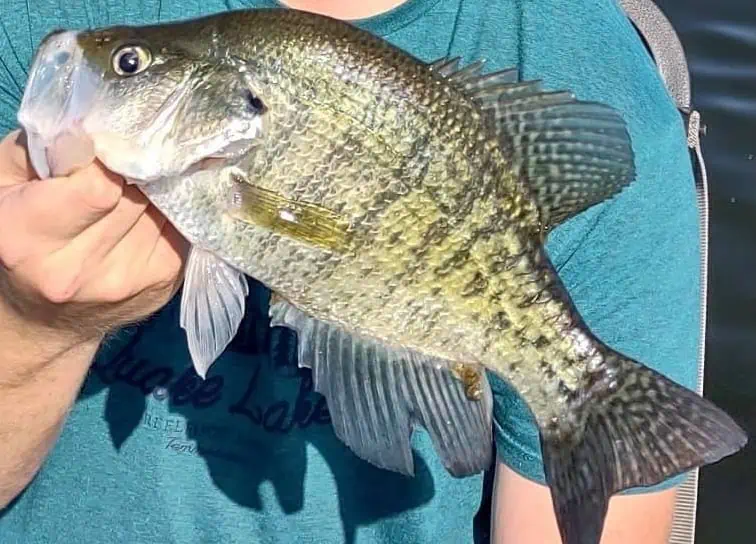Mastering Creek Fishing for Crappie: Top Tips and Techniques

Creek fishing is a popular and exciting way to catch crappie. It allows anglers to explore new areas and find fish in places they might not expect. However, creek fishing can also be challenging, as the water can be shallow and narrow, and the fish can be finicky.
Creek fishing also provides those who may not have a boat the opportunity to catch fish as well. It often reminds one of their childhood and fishing along the local creek for sunfish such as bream and crappie.
To help anglers improve their creek fishing game, let’s dive into some tips for catching crappie in creeks.
Fishing for Crappie Along a Creek
Fishing for crappie along a creek can be a rewarding experience for anglers of all skill levels.
Here are some tips to help you increase your chances of catching crappie:
- Look for cover: Crappie love to hide in cover such as fallen trees, stumps, and brush piles. These structures provide shelter and food for crappie, so be sure to cast your bait near them.
- Use live bait: Live bait such as minnows or worms can be very effective when fishing for crappie in a creek. Use a small hook and a bobber to keep the bait at the right depth.
- Try different lures: If live bait isn’t working, try using small jigs or spinners. Crappie forage for food by sight, this means they are attracted to bright colors and shiny objects. With that in mind choose lures that are colorful or have a metallic finish.
- Pay attention to the water temperature: If it has been cool recently Crappie are likely to be more active in warmer water, at the same time if it is in the dead of summer, crappie may seek out deeper cooler waters. Look for areas of the creek where the water might have slight changes in temperatures. Fish both temperatures. These areas include smaller streams feeding into the main creek, as well as slower moving water or deeper areas.
- Be patient: Fishing for crappie can require patience, especially when fishing along a creek. It may take some time to find the right spot and the right bait, so make to sure to try a few different baits, techniques, and locations, but most of all don’t give up too quickly.
Choosing the Right Equipment
When it comes to creek fishing for crappie, choosing the right equipment is essential. Here are some tips on selecting the right gear:
Fishing Rods
When choosing a fishing rod for crappie, the most important thing to consider is the conditions you will be fishing in. Things such as width of the creek, depth of water, and amount of trees and overhanging branches all affect the rod that you should use. Oftentimes creeks are smaller bodies of water and are frequently partially covered by trees and low hanging branches.
In regards to rod length, you may want to go with a 10 to 13 foot Black Widow Crappie Rod that does not have a reel, these are similar to cane poles and have the added advantage of being able to simply drop the bait where ever you can reach, these are excellent for jigging along creek banks. However sometimes they cause issues with overhanging branches.
Another option is to select a shorter rod with a reel that allows targeted casting and an easy maneuverability under overhead tree limbs.
Regardless of the rod length, it is important to select one that is sensitive enough to detect bites, yet strong enough to handle the fight of the fish. Look for a rod with a light or ultralight power rating and a fast action. This will allow for accurate casting and quick hooksets, while the light action allows enough flex that the hook isn’t ripped from the fish’s mouth.
Reels
Even larger crappie are a relatively lightweight fish with the record crappie only coming in at just over 5lbs. For that reason when crappie fishing, a small spinning or spincast reel is ideal for creek banks. A bait caster isn’t needed in these situations as the casts are relatively short and a bait caster could be prone to overspinning.
Selecting a reel with a smooth drag system and a high gear ratio will make it easier to retrieve the lure and set the hook quickly. The classic Zebco 404 or Zebco 33 make excellent choices if you prefer a spincast reel, they have the added advantage of being budget and kid friendly as well as easy to use.
Line and Hooks
When it comes to line, monofilament with a test strength of 4 to 6 pounds is a good choice for creek fishing. It has enough strength to handle the fight of the fish, yet is light enough to allow for accurate casting. For hooks, a size 4 to 6 Aberdeen hook is a popular choice for crappie fishing. These hooks are lightweight and have a long shank, making it easier to remove them from the fish’s mouth.
First, it’s important to use the right gear. Light rods and lighter mono line are recommended, as crappie have delicate mouths and can easily pull off the hook. Braided lines are generally considered less than ideal for crappie fishing, as they lack stretch and can cause the hooks to come loose. This can be countered though by using a short piece of monofilament line as a leader.
Baits and Lures
When it comes to bait and lures for crappie, live minnows are the most popular choice for crappie fishing. Minnows can be fished under a bobber or jigged along the bottom. Minnows often work great along creeks as they tend to be less common in large quantities than might be found in small ponds and lakes.
Jigs are the go to choice when considering artificial baits for use in a creek. Crappie are sight feeders and really go after jigs with a small profile and a light or brighter colors.
While some fishermen also have success using small spinners or spoons in ponds and on lakes, they tend to fare poorly in creeks as there is often not enough room to properly present these lure options.
Locating the Best Spots for Crappie Along a Creek
When it comes to creek fishing for crappie, finding the right spot is crucial. Here are some factors to consider when looking for the best fishing spots:
Time of Year in Regards to Crappie Fishing
While the time of year does not play a critical part in and of itself, crappie tend to behave differently depending on the weather conditions of the season, and even more so in the spring during their spawning times. Things like depth and preference for cover often change based on these factors.
Water Temperature
The water temperature plays a significant role in where crappie will be located. In the spring, crappie will move into shallow waters when the water temperature reaches around 60 degrees Fahrenheit.
During the summer, they will move to deeper, cooler waters. In the fall, they will move back to shallower waters as the water cools down again. By monitoring the water temperature, anglers can better predict where crappie will be located.
For creeks that may not be as deep as some ponds and lakes, look for crappie in areas that remain cooler, deeper pools and places with undercut banks that allow them to hide out of the sun will present good fishing targets.
Depth and Cover
Crappie like to hang out near cover, such as stumps, brush piles, and fallen trees. With the exception of spring when they are spawning, crappie tend to prefer deeper water.
When looking for a good spot, anglers should keep an eye out for these types of structures located along deeper portions of water, these can often be found after elevation drops in the water, or along bends in the creek where the water tends to dig out small channels.
Modern advancements in fish finders have brought their uses to creeks as well, for instance check out the iBobber. You can see our review of the iBobber here.
Time of Day
The time of day can also affect where crappie will be located. In the early morning and late afternoon, they will be closer to the surface. During the middle of the day, they will move to deeper waters in order to find cooler temperatures. Anglers should adjust their fishing techniques and location based on the time of day.
Though the best times for catching crappie tend to be early morning and later in the evening.
Conclusion; Fishing for Crappie along a Creek
In short when fishing for crappie along a creek, select a light action rod and use either minnows or jigs as your bait of choice, vary the depths you are fishing and work your baits along bends in the creek and other structures in the water such as logs and fallen trees.
Creek fishing provides an excellent opportunity for catching crappie and a relatively inexpensive way to get into fishing. Most of the basic supplies you need can be purchased for less than $30 meaning just about anyone with access to some water can get started with this fun and relaxing hobby.
